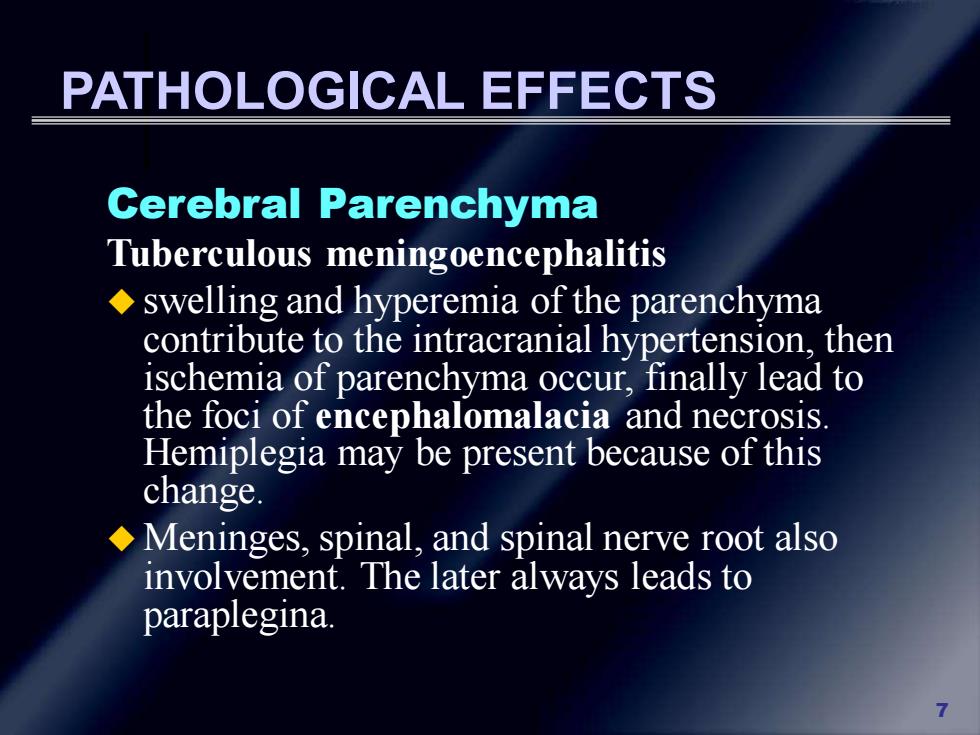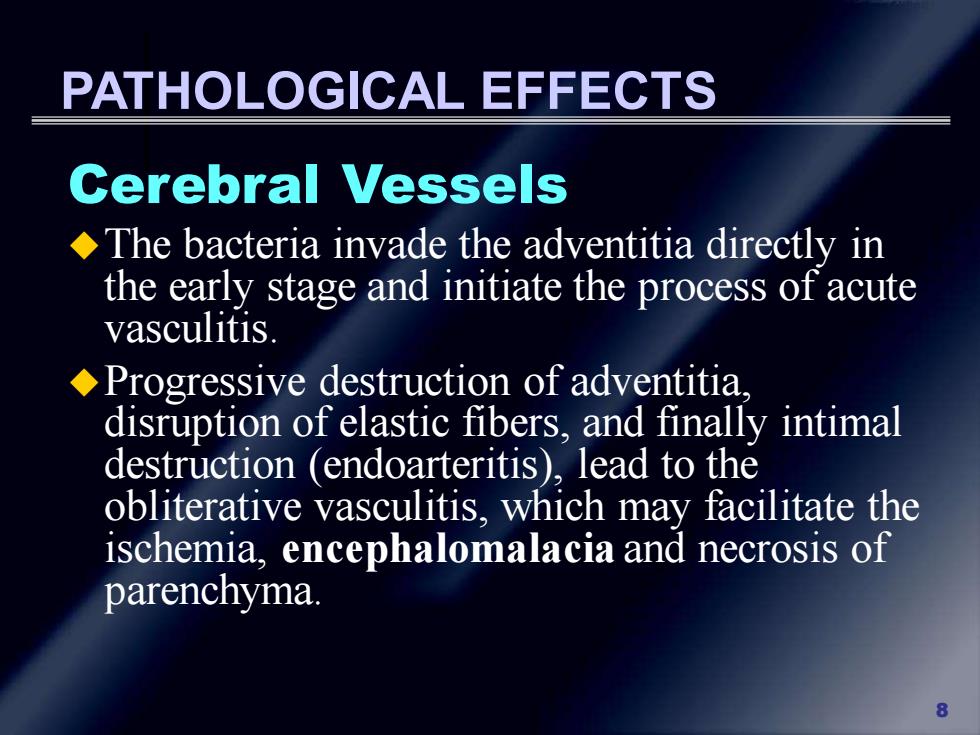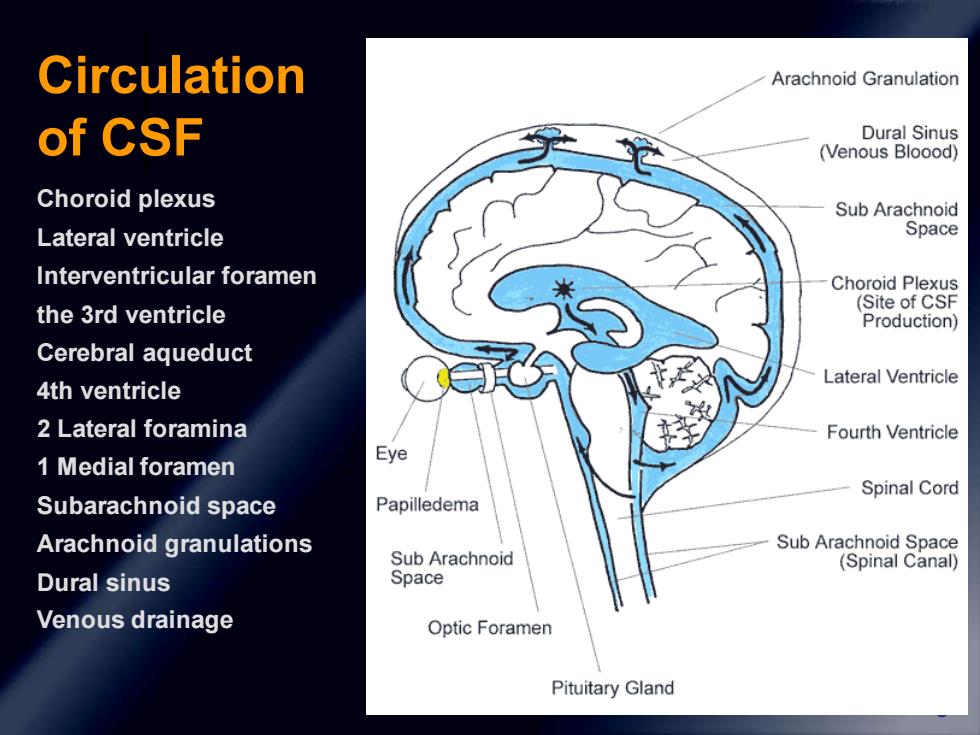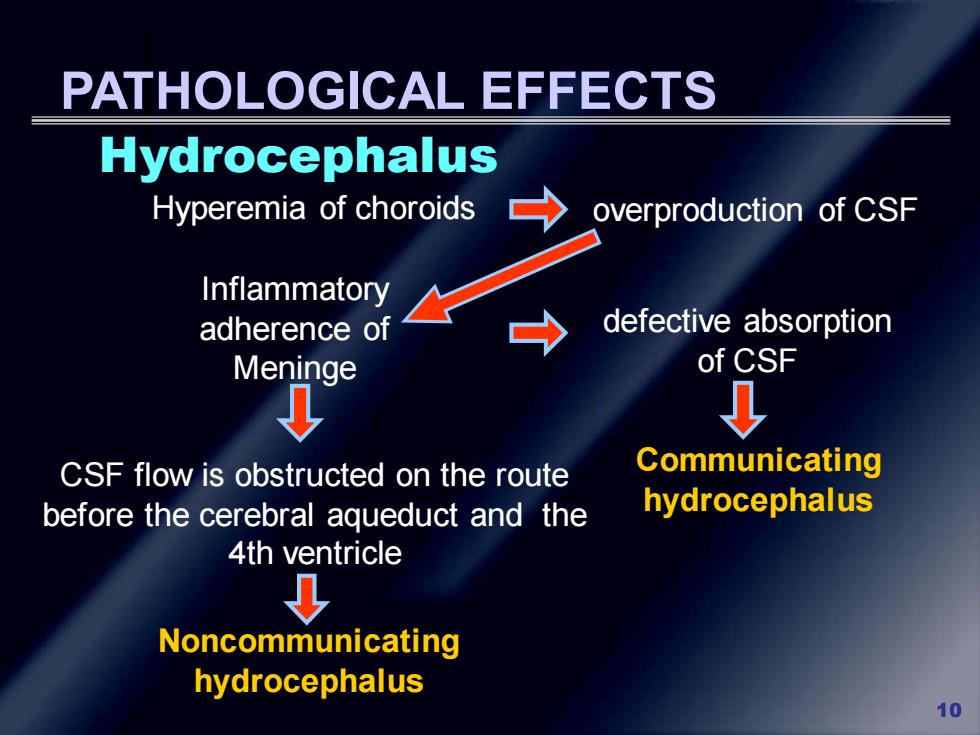
PATHOLOGICAL EFFECTS Subarachnoid Space A large amount of thick gelatinous exudates concentrate to the pavimentum cerebri,optic chiasma,bridge of varolius, bulbus rhachidicus and Sylvian fissure. Basal meningitis accounts for the frequent dysfunction of cranial nerves III, VL,andVⅡ. 6
6 PATHOLOGICAL EFFECTS Subarachnoid Space ◆A large amount of thick gelatinous exudates concentrate to the pavimentum cerebri, optic chiasma, bridge of varolius, bulbus rhachidicus and Sylvian fissure. ◆ Basal meningitis accounts for the frequent dysfunction of cranial nerves III, VI, and VII

PATHOLOGICAL EFFECTS Cerebral Parenchyma Tuberculous meningoencephalitis swelling and hyperemia of the parenchyma contribute to the intracranial hypertension,then ischemia of parenchyma occur,finally lead to the foci of encephalomalacia and necrosis. Hemiplegia may be present because of this change. Meninges,spinal,and spinal nerve root also involvement.The later always leads to paraplegina
7 PATHOLOGICAL EFFECTS Cerebral Parenchyma Tuberculous meningoencephalitis ◆ swelling and hyperemia of the parenchyma contribute to the intracranial hypertension, then ischemia of parenchyma occur, finally lead to the foci of encephalomalacia and necrosis. Hemiplegia may be present because of this change. ◆ Meninges, spinal, and spinal nerve root also involvement. The later always leads to paraplegina

PATHOLOGICAL EFFECTS Cerebral Vessels The bacteria invade the adventitia directly in the early stage and initiate the process of acute vasculitis. Progressive destruction of adventitia. disruption of elastic fibers,and finally intimal destruction (endoarteritis),lead to the obliterative vasculitis,which may facilitate the ischemia,encephalomalacia and necrosis of parenchyma
8 PATHOLOGICAL EFFECTS Cerebral Vessels ◆The bacteria invade the adventitia directly in the early stage and initiate the process of acute vasculitis. ◆Progressive destruction of adventitia, disruption of elastic fibers, and finally intimal destruction (endoarteritis), lead to the obliterative vasculitis, which may facilitate the ischemia, encephalomalacia and necrosis of parenchyma

Circulation Arachnoid Granulation of CSF Dural Sinus (Venous Bloood) Choroid plexus Sub Arachnoid Lateral ventricle Space Interventricular foramen Choroid Plexus the 3rd ventricle (Site of CSF Production) Cerebral aqueduct Lateral Ventricle 4th ventricle 2 Lateral foramina Fourth Ventricle 1 Medial foramen Eye Spinal Cord Subarachnoid space Papilledema Arachnoid granulations Sub Arachnoid Space Sub Arachnoid (Spinal Canal) Dural sinus Space Venous drainage Optic Foramen Pituitary Gland
9 Circulation of CSF Choroid plexus Lateral ventricle Interventricular foramen the 3rd ventricle Cerebral aqueduct 4th ventricle 2 Lateral foramina 1 Medial foramen Subarachnoid space Arachnoid granulations Dural sinus Venous drainage

PATHOLOGICAL EFFECTS Hydrocephalus Hyperemia of choroids overproduction of CSF Inflammatory adherence of defective absorption Meninge of CSF CSF flow is obstructed on the route Communicating before the cerebral aqueduct and the hydrocephalus 4th ventricle Noncommunicating hydrocephalus 10
10 PATHOLOGICAL EFFECTS Hydrocephalus Hyperemia of choroids overproduction of CSF Inflammatory adherence of Meninge defective absorption of CSF Communicating hydrocephalus CSF flow is obstructed on the route before the cerebral aqueduct and the 4th ventricle Noncommunicating hydrocephalus